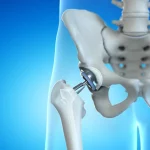Endoscopic spine surgery (ESS), which should not be confused with conventional operations, uses a tiny incision and specialized devices to surgically treat spinal diseases.
What Is ‘Endoscopy’?
The field of spine surgery is rapidly advancing. Traditional surgical techniques utilizing large, open incisions are being supplanted by minimally invasive approaches that allow for less surgical pain, faster recovery, and better overall results. One such instance of a minimally intrusive procedure is endoscopic surgery. These techniques are currently used in spine surgery to remove objects that are pushing on nerves and causing sciatic discomfort. A small camera (endoscope) is inserted through a very small incision. What Is Endoscopic Spine Surgery?
By definition, ESS is a surgical procedure using micro-sized incisions (less than 1 inch) and small tubular systems in combination with an endoscope to visualize the surgical field. Although endoscopic surgical techniques are frequently used to treat other body parts (such as the gastrointestinal system), improvements in optics, tissue visualization, and spinal imaging have made ESS a surgical treatment option for many patients.
Endoscopic spine surgery is a cutting-edge, cutting-edge approach to minimally invasive spine surgery created to give the patient a faster recovery period and less chronic pain than standard spine surgery techniques. Additionally, ESS can aid in maintaining the spine’s normal range of motion after surgery. In some circumstances, regional anaesthesia rather than general anaesthesia can be used to execute the ESS operation, lowering overall medical risks in patients who are older and/or have co-existing medical conditions that could raise surgical risk.
Endoscopic Spine Surgery Benefits:
Small incisions and hyper-targeting of the surgical site mean less trauma to skin, muscle, and soft tissues resulting in less blood loss and a faster recovery. Furthermore, most ESS procedures can be completed in about one hour allowing the patient to be back on their feet a few hours following post-operative recovery.
Endoscopic Spine Surgery Risks:
ESS is a highly sophisticated surgical technique that is continually developing. As a result, relatively few spine surgeons practice ESS methods frequently enough to be skilled. For revision surgery, cases of obvious spinal instability, high-grade spondylolisthesis, and/or malignancy, endoscopic spine surgery is typically not appropriate.
How is Endoscopic Spine Surgery Performed?
• Patient Preparation:
The patient is positioned on the operating table, typically lying face down to expose the back. The surgical team cleans and sterilizes the area around the surgical site
• Anaesthesia
General anaesthesia is administered to ensure the patient is completely unconscious and pain-free during the procedure.
• Incision
A small incision (usually less than 1 inch in length) is made in the skin over the affected area of the spine. This incision is significantly smaller than those used in traditional open spine surgery.
• Guidance and Visualization:
An endoscope, a thin, flexible tube with a camera and light source at its tip, is inserted through the incision The camera provides high-definition, real-time images of the spine on a monitor in the operating room. This allows the surgeon to visualize the area of interest with precision.
• Tissue and Bone Access:
Specialized instruments, such as microscopes, retractors, and endoscopic tools, are used to gently move aside muscles and other tissues to access the spine. The surgeon may use X-ray guidance (fluoroscopy) to confirm the exact location and alignment of the spine during the procedure.
• Procedure Specifics:
Depending on the specific condition being treated, the surgeon may remove or repair tissue, bone, or spinal structures that are causing compression or other issues. For example, a herniated disc may be partially or entirely removed, bone spurs may be shaved down, or a spinal fusion may be performed using minimally invasive techniques.
• Closure:
After the necessary procedure is completed, the endoscope and instruments are removed. The small incision is typically closed with stitches or adhesive strips.
• Recovery:
The patient is carefully monitored in the recovery area as they wake up from anaesthesia. Depending on the complexity of the surgery and the patient’s overall health, they may be discharged the same day or require a short hospital stay. Patients are given post-operative care instructions, including restrictions on certain activities and guidelines for pain management.
The Future of Endoscopy
While there are limitations, the future of endoscopy within spinal health is bright the success of current spinal applications shows that this ultra-minimally invasive technology is rapidly expanding in breadth.






